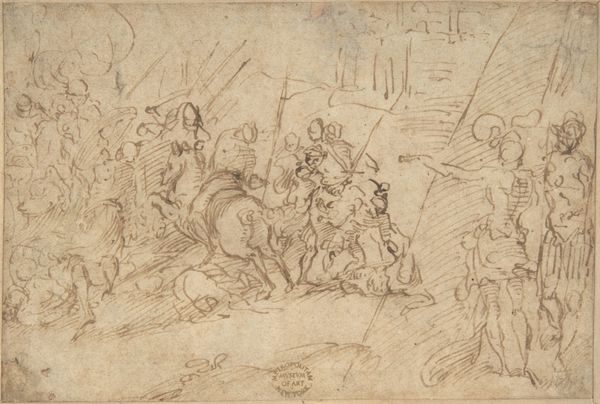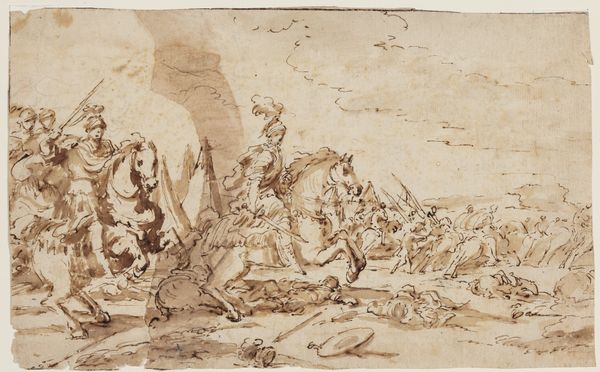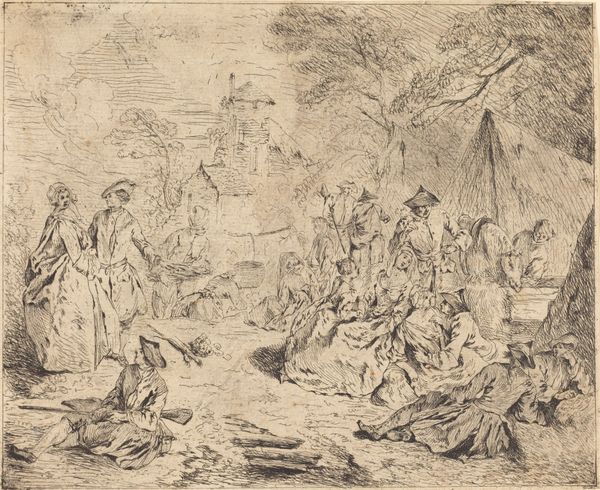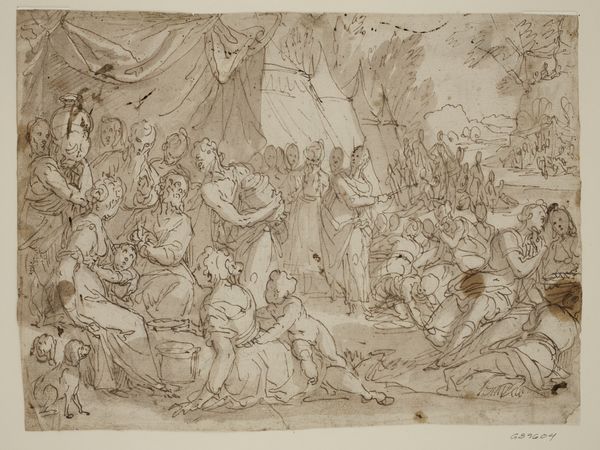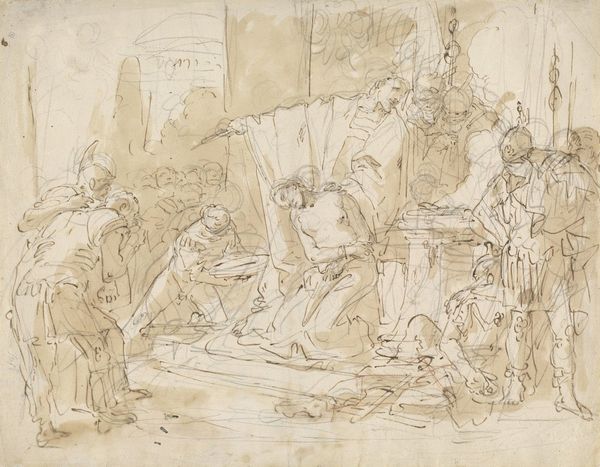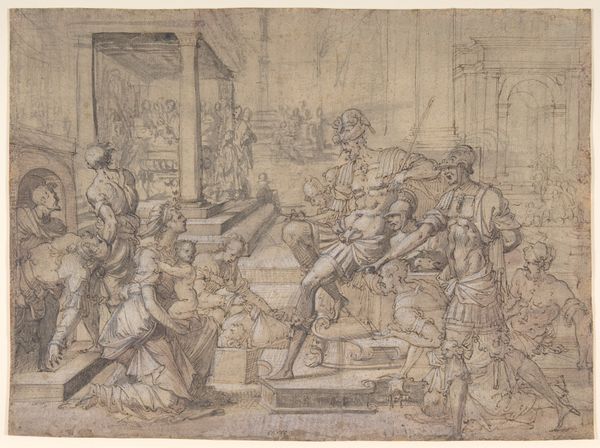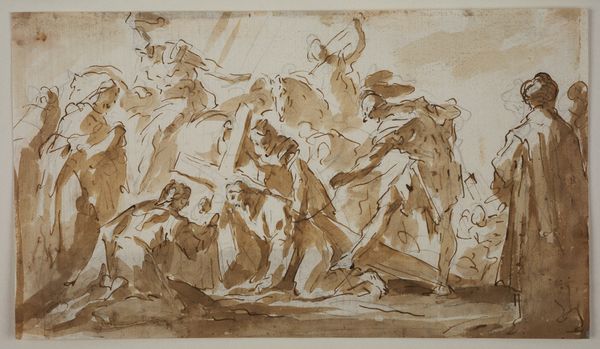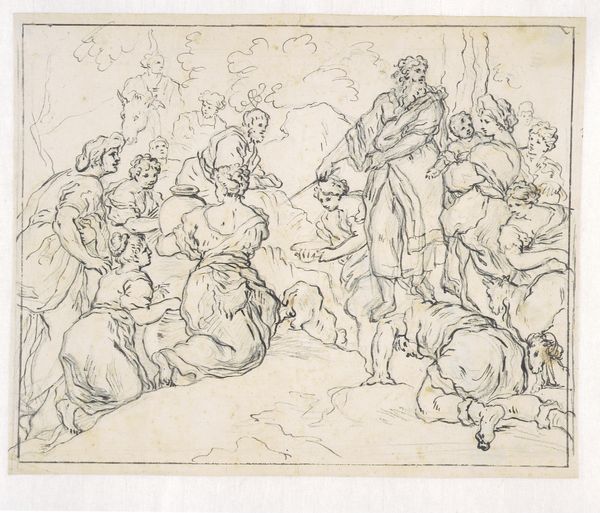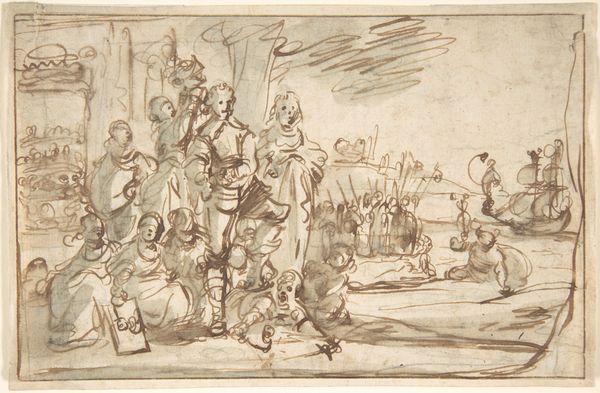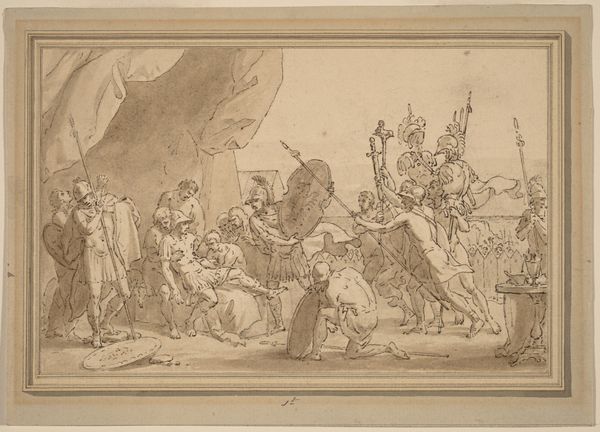
Dimensions: 15-1/2 x 19-13/16 in. (39.4 x 50.4 cm)
Copyright: Public Domain
Curator: Welcome. Today we're observing Giuseppe Piattoli's drawing, "Scene from Ancient History," which he worked on between 1785 and 1807. It's an ink and watercolor rendering currently residing at The Metropolitan Museum of Art. Editor: It’s captivating, immediately dramatic. The lines are so energetic, almost frantic. The figures feel caught in a moment of intense action. It reminds me of Baroque paintings—the heightened emotions, the theatricality. Curator: Absolutely. And consider Piattoli's process. Pen, ink, and watercolor— relatively accessible materials, which speaks to a shift towards broader artistic participation. We're not seeing the preciousness of oil on canvas here. This is a working drawing, perhaps a study for something grander, a testament to the artist's labor. Editor: Yes, but look at how those lines create form. The massing of figures in the center—almost a knot of bodies. And then there’s the interplay of light and shadow achieved with subtle washes. It directs our eyes to key elements like the soldier on horseback and the figures surrounding him. Curator: And think about the narrative it presents. The choice of subject from "ancient history" implies a desire to connect with a historical narrative. It evokes ideas of military power, hierarchy and probably, conflict, perhaps resonating with contemporary societal unrest during the period of its creation. Editor: Perhaps. However, it is also clear that formal and technical elements such as composition, scale and the balance between dynamism and order evoke more directly a universal theme. To be more precise: it tells a story of sacrifice and conflict beyond specific context. Curator: Good point. The accessibility of the medium allows us to understand how the artist, who produced multiples using these tools, could disseminate history—or a version of it—to a wider audience, challenging the exclusive patronage of elites. Editor: It does not just serve to spread content in an affordable format but offers also an insight in the human form and shape through its technical expression. Curator: Indeed, this allows us a more critical approach to history making. Editor: Both formally arresting and rich with interpretive possibilities. A stunning little scene from, well, who knows when!
Comments
No comments
Be the first to comment and join the conversation on the ultimate creative platform.

